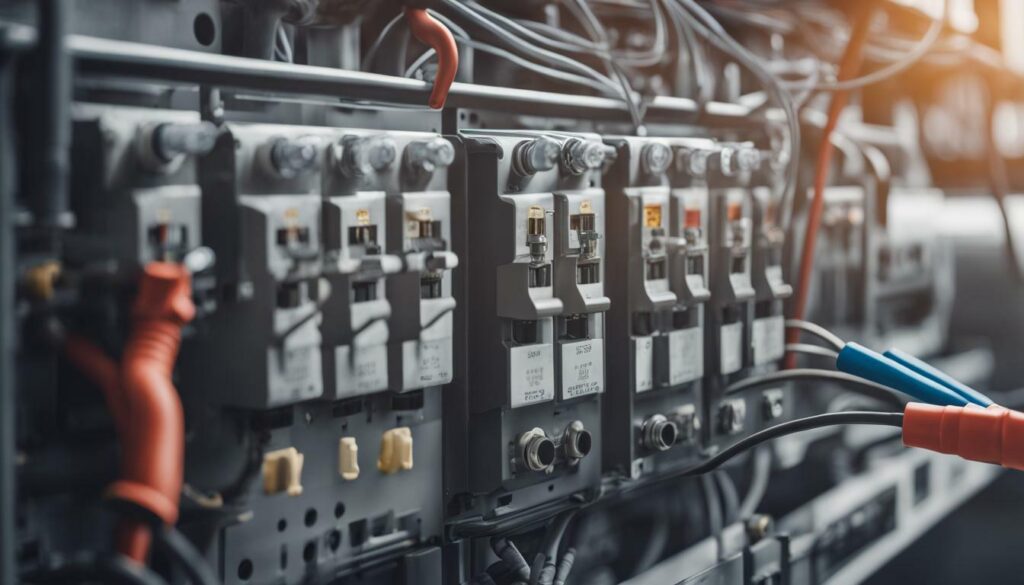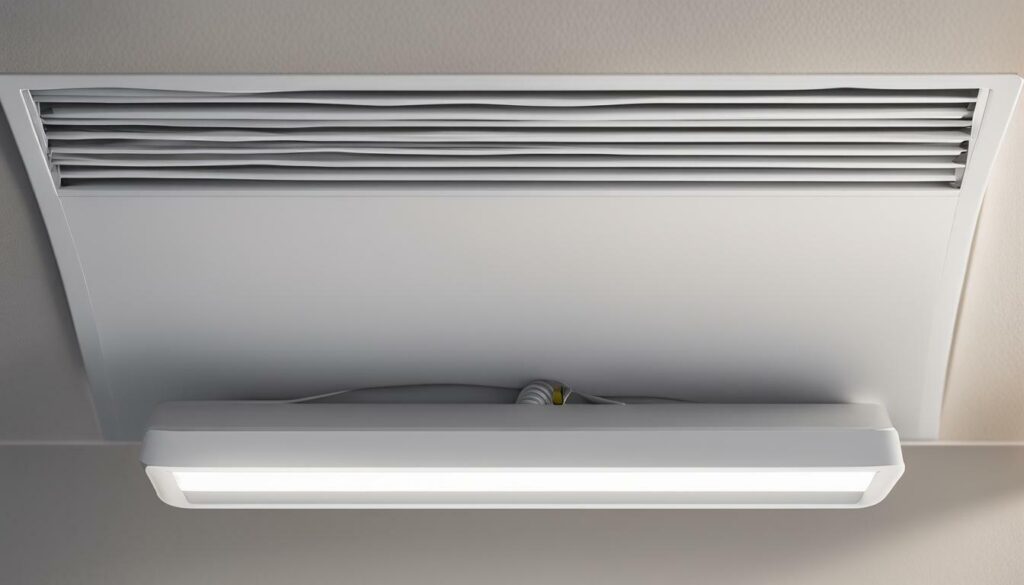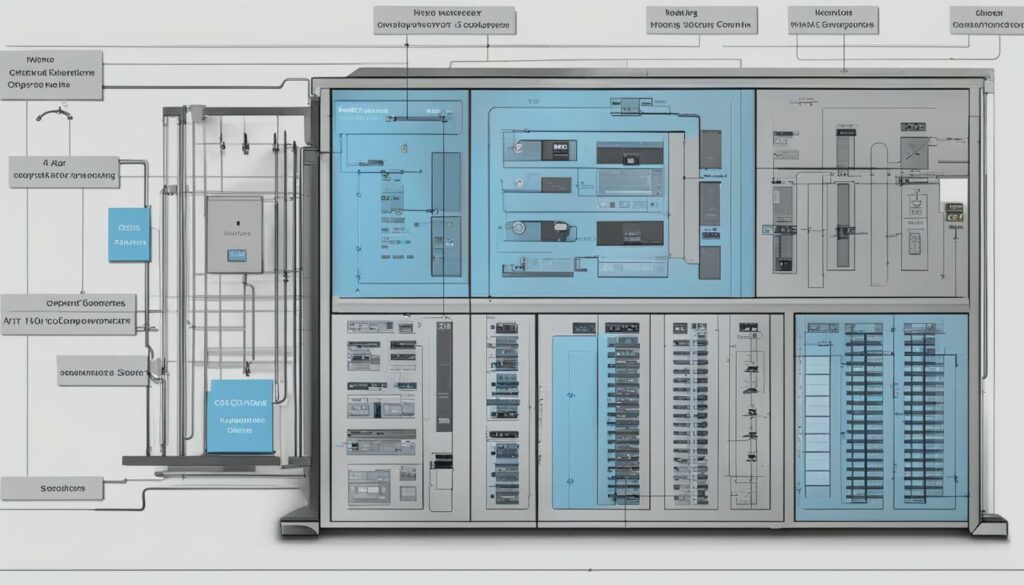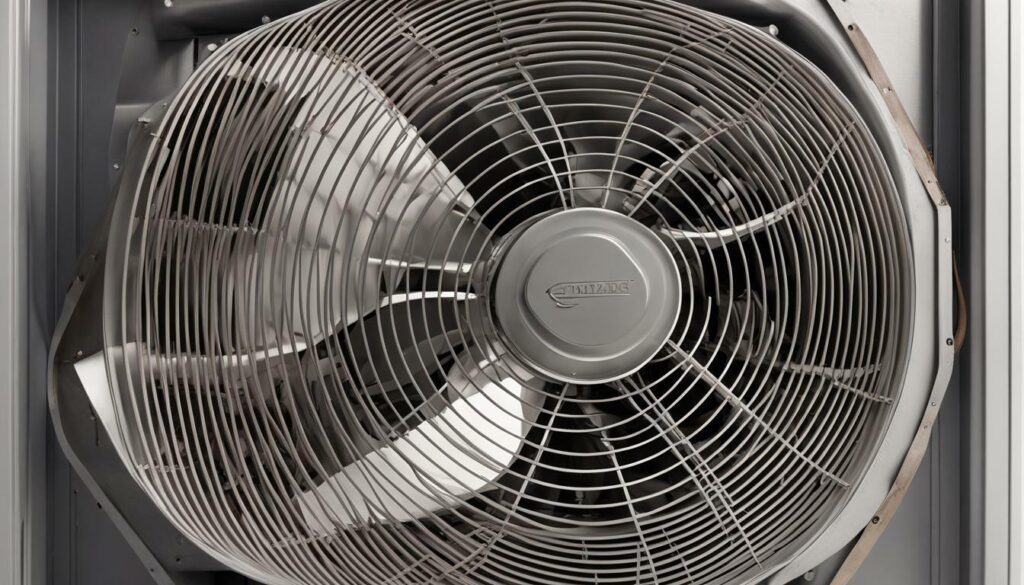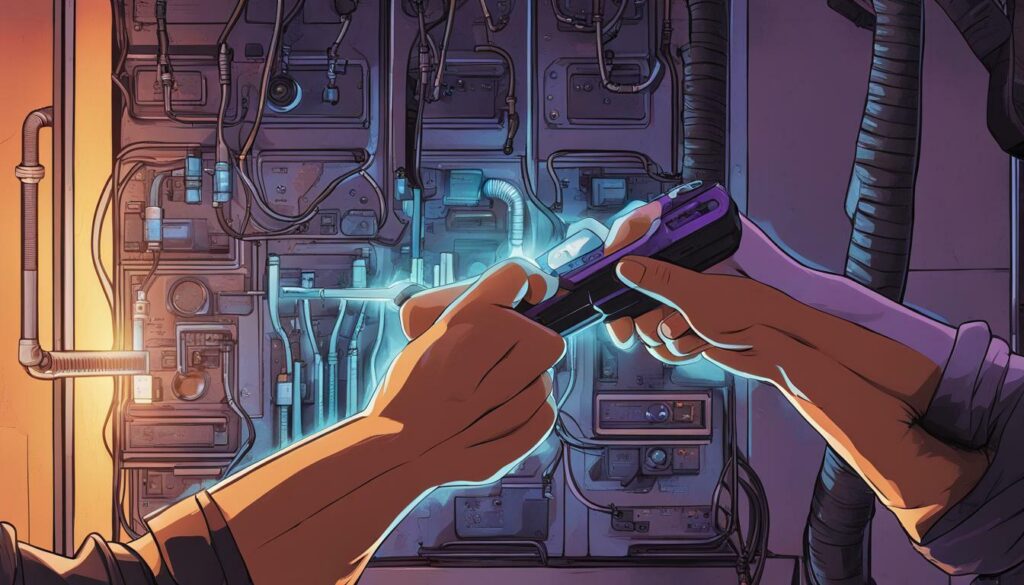If you own an HVAC system, you know how important it is to maintain safe and reliable operation. One way to ensure safety is by using the right switches for your HVAC circuits. In this article, we will explore the most common switches used for safety controls and HVAC system settings. Understanding these switches is essential to keeping your HVAC system running smoothly and efficiently.
Key Takeaways
- Proper switches are crucial for safety and efficiency in HVAC systems.
- There are various switches used for safety controls and HVAC settings.
- Choosing the right switches and ensuring proper installation and maintenance can improve comfort and peace of mind.
Understanding HVAC Safety Switches
When it comes to maintaining a safe and reliable HVAC system, safety switches are a crucial component. HVAC safety switches are designed to detect and respond to potentially dangerous situations, ensuring the system operates safely and efficiently. Let’s take a closer look at some of the key types of safety switches used in HVAC units and the options you have.
HVAC Safety Switches for Units
One of the most common types of HVAC safety switches is the high pressure switch. This switch is designed to monitor the refrigerant pressure in the system and shut it down if the pressure becomes too high, preventing damage to the compressor. Another important safety switch is the low-pressure switch, which is designed to shut off the system if the refrigerant pressure becomes too low, preventing damage to the compressor and other components.
A third type of safety switch used in HVAC units is the limit switch. This switch is designed to monitor the temperature of the heat exchanger and shut off the burner if the temperature exceeds a certain threshold, preventing the risk of a fire or other safety hazard.
HVAC Switch Options
When it comes to choosing switches for your HVAC unit, you have several options. Manual reset switches require manual intervention to reset them after they have tripped, while automatic reset switches will reset themselves once the fault has been corrected. Some switches also offer adjustable pressure or temperature settings, allowing you to fine-tune the operation of your system.
It’s important to choose switches that are compatible with your HVAC unit and meet the necessary safety standards. Consult with a professional HVAC technician to ensure you select the best switches for your specific needs.
Up next, we’ll explore the different types of control switches used in HVAC circuits and their functions.
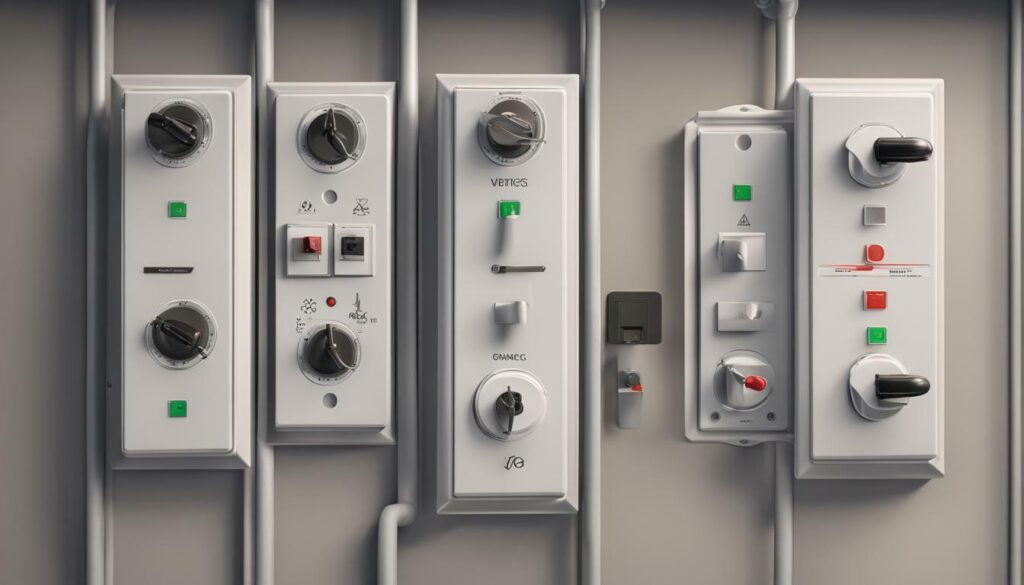

Exploring HVAC Control Switches
Now that you understand the importance of safety switches in HVAC circuits, let’s explore the different types of control switches commonly used in these systems. HVAC control switches play a crucial role in regulating temperature, air quality, and overall system performance.
There are several types of control switches for HVAC systems, each with a unique function. One of the most common types is the thermostat, which controls the temperature by turning the HVAC system on or off. Other control switches include fan switches, mode selection switches, and timer switches.
The fan switch allows you to adjust the fan speed, which can help regulate the flow of air through your home. Mode selection switches offer different settings, such as heating, cooling, or dehumidifying. Timer switches allow you to pre-set a schedule for your HVAC system to turn on and off, which can help save energy and reduce costs.
| HVAC Switch Types | Description |
|---|---|
| Thermostat | Regulates temperature by turning the HVAC system on or off |
| Fan Switch | Allows you to adjust fan speed to regulate airflow |
| Mode Selection Switch | Offers different settings, such as heating or cooling |
| Timer Switch | Allows you to pre-set a schedule for your HVAC system to turn on and off |
When choosing control switches for your HVAC system, it’s important to consider factors such as compatibility with your system, durability, and cost-effectiveness. Some control switches may be more expensive but offer additional features or a longer lifespan.
Proper installation and maintenance of control switches is also critical for optimal performance. Be sure to follow the manufacturer’s instructions carefully and have a professional HVAC technician handle any complex installations or repairs.


Upgrading your HVAC control switches can not only enhance your home’s comfort and air quality but also improve energy efficiency and reduce costs in the long run. Consider consulting with an HVAC professional to determine if upgrading your switches is a viable option.
Common Switches Found in HVAC Circuits
If you’re wondering what types of switches are commonly found in HVAC circuits, you’ve come to the right place. The switches used in these circuits are typically designed for safety control, making them integral to the proper functioning and safe operation of HVAC units.
One of the most common switches used in HVAC circuits is the pressure switch. This switch is responsible for ensuring that the pressure within the HVAC system remains within safe and optimal levels. If the pressure becomes too high or too low, the pressure switch will trigger a shutdown to prevent damage to the system or potential safety hazards.
Another commonly used switch is the temperature switch. This switch is responsible for monitoring the temperature within the HVAC system and triggering actions to maintain a safe and comfortable temperature range. It may also activate fans or other components to maintain proper temperature levels.
The flow switch is another important safety control switch commonly found in HVAC circuits. This switch monitors the flow of fluid or air within the system and triggers actions if the flow becomes too low or stops entirely. This is important for preventing damage to the system and ensuring proper circulation of fluids or air.
Finally, limit switches are often used in HVAC circuits to prevent overheating or overpressure situations. These switches are designed to automatically shut down the system if the temperature or pressure exceeds safe levels, preventing damage to the system and potential safety hazards.
As you can see, HVAC circuits rely on a variety of safety control switches to ensure proper operation and prevent damage or safety hazards. Installing and maintaining these switches is critical for the safety and longevity of your HVAC system.


Safety Control Switch Manufacturers
When it comes to safety control switches for your HVAC units, it’s important to choose a reputable and reliable manufacturer. Here are some top manufacturers to consider:
| Manufacturer | Product Offerings | Noteworthy Features |
|---|---|---|
| Honeywell | Limit and fan controls, pressure and airflow switches, gas valves | Offers a wide range of customizable options and has a reputation for high-quality products |
| Johnson Controls | Pressure, temperature, and air quality switches, gas valves, control panels | Provides advanced automation and control solutions for commercial and industrial HVAC systems |
| Siemens | Pressure and temperature switches, control valves, sensors | Specializes in energy-efficient and sustainable HVAC solutions |
These manufacturers are known for their expertise in HVAC control switch technology and offer a range of products to suit different needs and budgets.
When selecting a manufacturer for your HVAC switches, be sure to research their reputation and read reviews from other customers. Choosing a reliable manufacturer can provide you with peace of mind knowing that your HVAC system is equipped with high-quality safety and control switches.
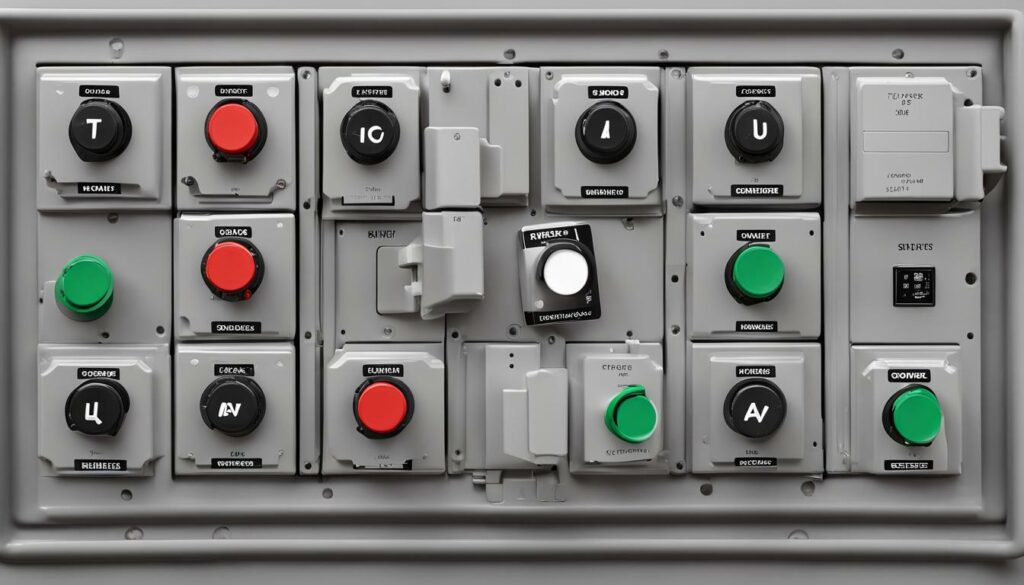

Factors to Consider when Choosing HVAC Switches
When it comes to selecting the right switches for your HVAC system, there are several factors to consider. These switches play a vital role in the proper functioning and safety of your system, so it’s important to choose wisely. Here are some things to keep in mind when evaluating your HVAC switch options.
Compatibility
Make sure the switches you choose are compatible with your HVAC system. Check the manufacturer’s specifications to ensure you are selecting the correct switches for your particular unit. Installing incompatible switches can damage your system and compromise safety.
Durability
Look for switches that are built to last. HVAC systems can be subjected to harsh conditions, including extreme temperatures and humidity. Make sure the switches you choose are made with durable materials that can withstand these conditions and provide reliable service for years to come.
Cost-effectiveness
While it’s important to choose high-quality switches, you also want to make sure you’re getting good value for your money. Compare prices and features among different manufacturers to find switches that offer the right balance of affordability and performance.
Installation
Proper installation is crucial to the safe and effective operation of your HVAC system. If you’re not comfortable installing the switches yourself, consider hiring a professional HVAC technician. They have the knowledge and expertise to install switches correctly and ensure your system stays safe and reliable.
By considering these factors, you can make an informed decision when selecting switches for your HVAC system. Keep in mind that the switches you choose can have a significant impact on the safety, performance, and longevity of your system. So, take your time and choose carefully.
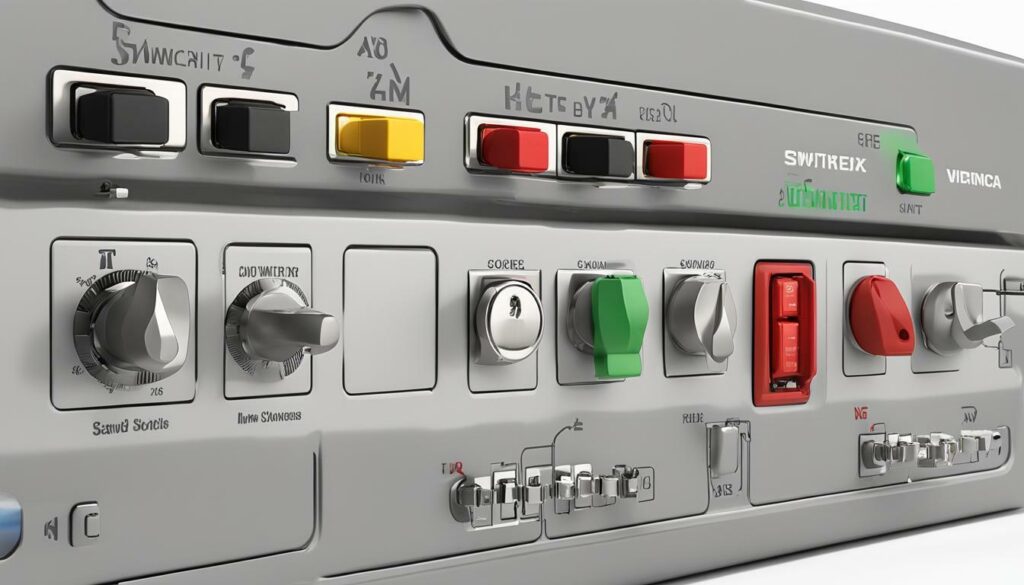

Ensuring Proper Installation and Maintenance of HVAC Switches
Switches are essential components in HVAC systems, and they play a crucial role in maintaining your system’s safety and efficiency. However, simply installing switches is not enough. Proper installation and regular maintenance are necessary to ensure optimal performance and longevity of your HVAC switches.
When it comes to installation, it is essential to make sure that the switches are compatible with your HVAC system and installed correctly. Incorrect installation can lead to malfunctions, safety hazards, and even damage to your HVAC system. To ensure proper installation, it is recommended that you hire a certified HVAC technician.
Regular maintenance is equally important for keeping your HVAC switches in top condition. Over time, switches can wear out or become dirty, leading to malfunctions or safety hazards. To prevent this, it is recommended that you schedule regular maintenance checks with a certified HVAC technician. These checks can include cleaning, testing, and replacing switches as needed.
When considering HVAC switch options, it is also important to think about maintenance requirements. Some switches may require more frequent maintenance than others, and this should be taken into account when choosing switches for your system.
By ensuring proper installation and regular maintenance of your HVAC switches, you can enjoy a safer and more efficient HVAC system. Plus, you can avoid costly repairs and replacements down the line.
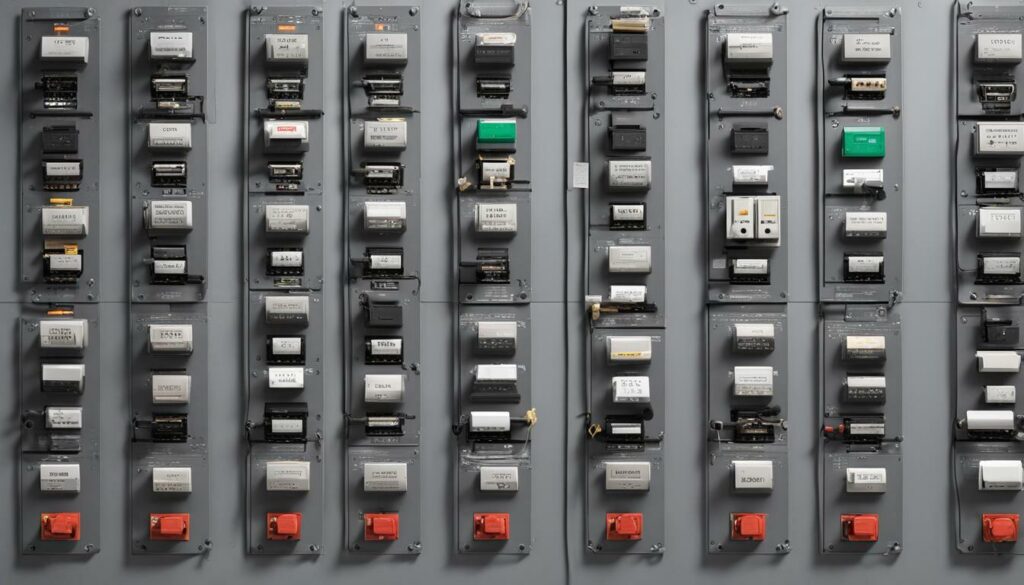

Up next, we’ll discuss the benefits of upgrading your HVAC switches for enhanced home comfort and safety.
Enhancing Home Comfort and Safety with Upgraded HVAC Switches
If you’re looking to improve the comfort and safety of your home, upgrading your HVAC switches is a great place to start. By opting for modern switches, you can enhance the energy efficiency of your HVAC system while gaining greater control over your home’s temperature and air quality.
Upgraded switches for HVAC units provide additional safety benefits as well. By ensuring that your HVAC circuit safety switches are up-to-date, you can better protect your home from potential hazards caused by electrical malfunctions. It’s always better to be safe than sorry, and taking this proactive step can give you greater peace of mind.
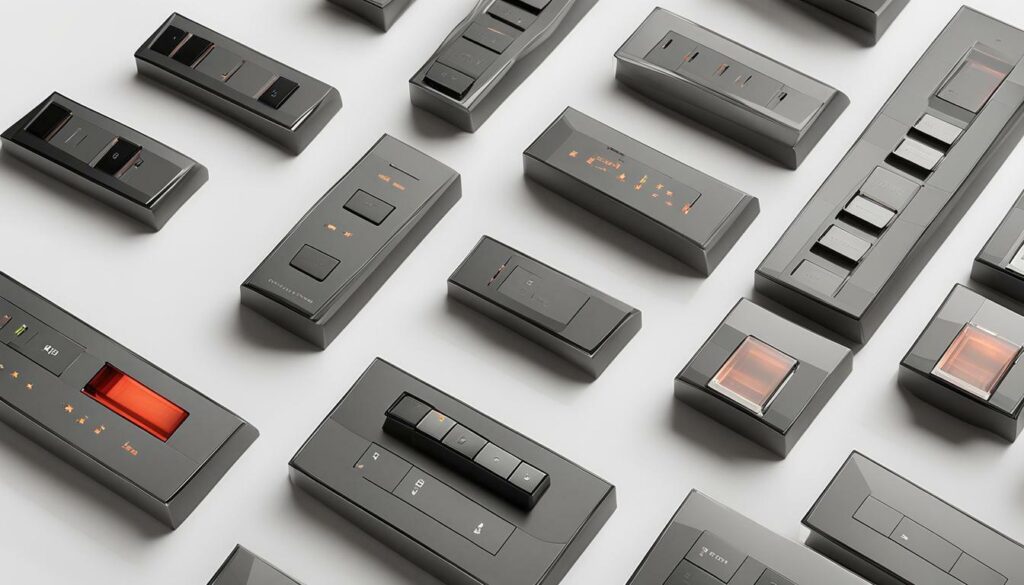

When selecting new switches for your HVAC system, look for options that are compatible with your existing setup and have a proven track record of durability. While cost is always a factor, it’s important to prioritize quality and reliability over savings in order to avoid future maintenance or repair costs.
Proper installation and maintenance of HVAC switches is crucial to their performance and longevity. Be sure to follow manufacturer guidelines when installing new switches, and schedule regular maintenance to keep them in good working order. This can help avoid potential issues down the line and ensure that your HVAC system runs smoothly for years to come.
Conclusion
Now that you have a better understanding of HVAC safety and control switches, you can make informed decisions about the switches used in your HVAC system. Remember, safety should always be a top priority, and the right switches can help ensure safe operation and prevent potentially dangerous situations.
If you’re considering upgrading your HVAC switches, keep in mind the factors discussed in this article, such as compatibility, durability, and cost-effectiveness. And don’t forget about the importance of proper installation and maintenance to ensure optimal performance and longevity.
Upgrade for Enhanced Comfort and Safety
Upgrading your HVAC switches can not only enhance safety, but also improve your overall home comfort. Modern switches can provide greater control over HVAC systems, allowing you to adjust temperature, fan speed, and more to achieve the perfect level of comfort.
Additionally, upgraded switches can enhance energy efficiency, which can lead to cost savings in the long run. So, if you’re looking to enhance your home comfort and peace of mind, consider upgrading your HVAC switches.
Thank you for reading this article on HVAC switches. We hope it has provided valuable insights and information to help you make informed decisions about your HVAC system. Stay safe and comfortable!
FAQ
Q: What are HVAC safety switches?
A: HVAC safety switches are switches used in HVAC circuits to ensure safe operation. They help protect the system from potential hazards and prevent damage.
Q: What are HVAC control switches?
A: HVAC control switches are switches used in HVAC circuits to control different aspects of the system, such as temperature, fan speed, and mode selection. They allow users to adjust and customize the operation of their HVAC units.
Q: What are the most common switches found in HVAC circuits?
A: The most common switches found in HVAC circuits include safety control switches, such as limit switches and pressure switches. These switches help monitor and regulate system performance to ensure safe operation.
Q: How do I choose the right HVAC switches for my system?
A: When choosing HVAC switches, it is important to consider factors such as compatibility with your system, durability, and cost-effectiveness. Consulting with a professional or referring to your system’s specifications can help guide your decision.
Q: How can I ensure proper installation and maintenance of HVAC switches?
A: Proper installation and regular maintenance of HVAC switches are crucial for optimal performance and longevity. Following manufacturer instructions, hiring a qualified technician for installation, and scheduling regular inspections can help ensure their proper functioning.
Q: What are the benefits of upgrading HVAC switches?
A: Upgrading HVAC switches can enhance home comfort and safety. Modern switches offer improved energy efficiency, greater control over HVAC systems, and enhanced system performance, contributing to a more comfortable and secure environment.

